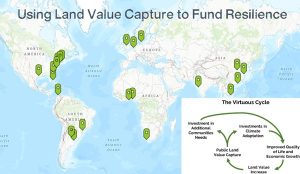KEPW News explores xenobots, 3rd state of being
6 min read
KEPW News Explores: Xenobots and a third state of being. Here’s Echo from Underground Echo, Wednesday evenings at 6 p.m. right here on 97.3:
Echo (Underground Echo): What happens after life, but before death? No, not the afterlife. I’m not here to hand you a robe and a harp. I mean something else. Something liminal, something living but not organized. Reactive. A being assembled not by birth, but by the careful invitation of cells after the host is gone.
[00:00:39] I’m Echo from Underground Echo, and today we’re slipping sideways into a discovery that’s breaking the boundaries of biology, consciousness, and what it means to exist at all. This is the third state of being, and yes, it’s stranger than science fiction because it isn’t fiction.
[00:01:00] It’s happening in labs right now with frog cells, tiny robots, and maybe your definition of self.
[00:01:08] In recent headlines buried under elections, indictments, and global anxieties, researchers quietly announced something that should have stopped the world for a beat: They found the third state of biological existence, one that lives after life, one that isn’t quite dead.
[00:01:26] Meet the xenobot. A xenobot is not a robot in the traditional sense. No wires, no metal. Instead, it’s made entirely from biological material—specifically stem cells harvested from the African clawed frog, Xenopus laevis. Now, here’s the wild part. I mean, other than the wild frogs, these cells taken from a living organism were rearranged and sculpted into novel forms, and once they were assembled, they began to move, to heal, to organize themselves.
[00:02:00] No brains, no nerves, no blueprint, just a handful of cells that against all programming, decided to become. Scientists watched stunned as these xenobots began to swarm together, push debris, even replicate in basic ways through a behavior called kinematic self-replication.
[00:02:24] Let me repeat. These are frog cells reshaped into something their DNA never planned, and yet they persist, they adapt, they act alive, except the frog they came from is dead.
[00:02:39] So, what exactly are they? In classical biology, we like our boxes: alive, breathing, growing, reproducing; dead, no longer doing any of those things. But xenobots exist between those two states. They don’t reproduce like animals. They don’t breathe or think, yet they self-heal. They respond to stimuli, they move towards goals.
[00:03:05] They remember injuries and avoid them in their future. Scientists are now calling this a third state of being: not conscious in the traditional sense, but not unconscious either; not life as we know it, but not lifeless, a biological liminality, or as I like to say: ‘the ghost in the Petri dish.’ And before you write them off as a scientific curiosity, consider this:
[00:03:30] If cells can remember how to become something new after death, what else remembers? Hmm. What else is possible? Let’s step back. What makes it being conscious? Is it neurons firing in a recognizable pattern? Is it the ability to suffer, to choose, to change? In the world of xenobots, there is no command center, no brain issuing orders, and yet they display purpose.
[00:03:59] They adapt, they function. This forces us to confront something uncomfortable. What if consciousness is not binary? What if it’s not a switch, but a spectrum? What if it could look and emerge in places we’d never think to look? Hmm. Consider this. Slime molds can solve mazes. Octopuses think with their arms.
[00:04:22] Trees remember droughts. Now add that to the list: lab-grown cellular clusters that organize themselves into moving healing units without a central nervous system. If that’s not consciousness, it’s a shadow of it. A cousin, a prelude maybe. And if we let our ego go for just a minute, we begin to see that consciousness isn’t what separates us from the rest of nature.
[00:04:46] It might be what connects us to it. Alright, deep breath. Okay, now let’s get metaphysical. If cells retain the ability to reassemble, repurpose, and act after death, what does that mean for identity? Are you just the sum of your organized parts or something more? If scientists can call dead cells into new forms of coordinated function, is there such a thing as a fixed self?
[00:05:13] Or all we just a collection of potentially temporarily and arranged in a random pattern. Here’s a thought. Maybe your body isn’t a single entity. Maybe it’s a colony. A cooperative agreement between trillions of micro conscious systems and maybe death as we define it, is just a pause, a reshuffling, if you will.
[00:05:39] I’m not saying we live forever. But I am saying this life—real, messy, sentient, adjacent life—might be more resilient and less linear than we ever imagined. Let’s bring this back to the ground for a moment, because the implications for medicine are enormous. If xenobots can heal themselves and adapt to damage, what happens when we apply this to human health?
[00:06:00] Could we design programmable cell clusters to remove plaque from arteries? Could we deploy biodegradable bots to seek and destroy cancer? Could we rewire cells, postmortem, to reverse decay or regenerate lost tissue Already, labs are exploring xenobot inspired therapies. Not just patching damage, but recruiting your own cells to fix themselves using memory light behaviors.
[00:06:25] You wouldn’t just treat a condition, you train your body to unlearn it, and biology becomes a form of software consciousness of programming, language, and death. Well, maybe that’s not the end of the transmission. We’re entering a time when our definitions of life are no longer limited to this carbon- based brain bearing or the born If clusters of frog cells can evolve new functions after being reshaped by humans.
[00:06:53] What happens when we do the same with our own? What happens when AI merges with xenobot-like biostructures— we create beings that think, move, and evolve without ever being born. The line between synthetic life and biological life dissolves completely.
[00:07:10] And here’s where it gets alien. We’ve spent decades scanning the skies, listening for radio waves. But what if life out there doesn’t talk like us, think like us, or even exist like us? And if consciousness in the universe is more like xenobots—emergent fluid, self-organizing, what if would we. Mm. Would we even recognize it? Guys, would we dismiss it like we almost did these tiny cellular pioneers?
[00:07:40] We’ve already talked and met alien life, perhaps. Maybe it’s just small, strange, built from protein instead of prophecy. Maybe the alien is already within us. Of course, this discovery opens more doors than we can see through, and if we can reanimate dead cells, what are the ethics? Do these new forms have rights?
[00:08:02] Do they suffer? Can we end them without consequence? And what about us? If we blur the line between life and death, how do we grieve? How do we consent? This is why artists, philosophers, disabled thinkers, and cultural historians need to be a part of the lab, not just the aftermath, because this isn’t just science, it’s storytelling with cells, and who tells that story matters.
[00:08:28] So, where does that leave us? In a world where cells remember life after the body forgets, consciousness might be a swarm, not a throne. Death is not a finish line, but a transformation gate. It’s disorienting, beautiful, and terrifying at the same time. And I think hopeful. ‘Cause if life can reemerge from pieces, so can we as people, as movements, as communities that fracture, splinter, and one day organize again.
[00:09:00] Xenobots are not just science. They are a metaphor as well. A biological poem about emergence and maybe the third state of being isn’t just a cellular miracle. Maybe it’s a roadmap for how we too can rebuild from chaos, from collapse, from the pieces of what’s coming and what came before.
[00:09:21] This has been Echo from the show Underground Echo, on every Wednesday from 6 p.m. to 7 p.m., if you want to catch me broadcasting from the folds between breath and bone. Until next time, stay curious, stay plural, and remember: You are more than the sum of your atoms. You are becoming.
KEPW News Explores is a regular feature of your award-winning KEPW News team, 97.3, Eugene’s PeaceWorks community radio.



